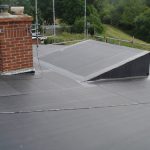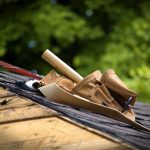Storm Aftermath – Hire A Roofing Professional Right Away
While modern roofing systems are designed to handle all kinds of weather conditions, they’re not infallible. Severe storms and hail can cause extensive damage to the roof, and this damage should be repaired immediately to avoid problems down the line. An experienced Denver roofing company can scrutinize the structure, note down all issues, and offer expert solutions to restore its integrity. If you notice wearing signs after a storm, contact a repair service right away.
Hail Damage

Leave your roof repairs to experts and avoid hurting yourself.
Roofs are designed to handle a small amount of hail damage, but they can only bear so much. Hailstones are balls of ice more than 5mm in diameter and are less dense than pure ice because of air bubbles trapped inside. A 25mm hailstone reaches the terminal velocity of 22.3 m/s and has an impact energy of 1.4 j, which means it hits any surface with a massive force.
Hailstones can make massive dents on your car’s surface so they can also cause substantial damage to roofing materials. The impact can cause indentations in metal flashing, cracks in shingles, and even compromise the roofing membrane. A damaged membrane can cause massive leaks, and that can lead to water damage.
The only way to limit the damage is to call a professional roof repair technician immediately. They will examine your roof, mark out problem areas, and repair them quickly.
Other Kinds of Storm Damage
A residential roof can also sustain damage from winter or rainstorms, so you should call Denver roofing specialists even if there’s no noticeable damage to the structure. The experts will conduct a thorough examination to ensure the roof is strong enough to handle future storms. Here’s a look at some of the other forms of damage it can sustain:
- Snow Accumulation – Heavy snowfall can add excess load to the roof and cause structural damage. The weight combined with extreme temperature changes can even cause roofs to cave in. You will need to inspect the roof for severe issues after the weather becomes warmer.
- Strong Winds – Strong winds can blow the shingles off your roof. It’s common a few shingles to go missing after every storm. Hurricanes can blow the roof right off the property.
- Heavy Rains – Persistent rainfall can damage the roof’s surface and erode the shingles. You will see granules in the drain pipes and gutters as a result of this erosion.
Call professional roof repair services after a storm to check the structure for damage and fix it quickly. If you ignore the problems, they will only grow worse with time.




You must be logged in to post a comment.